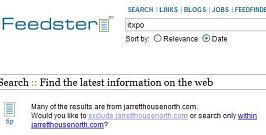IBM unveils a stack of IT Service Management products, including new products and fourteen enhanced products. Key is an open federated configuration management database. Positioning as helping provide tools and practices to make ITIL more implementable. More coming…
IBM says that they’re uniquely positioned to bridge development and infrastructure, between Rational and Tivoli. This positions them to help make IT services more manageable.
Organizations have choices: implement lots of point solutions to fix specific problems, adding complexity; outsource, possibly losing a competitive strength; or apply ITSM. Customer testimonial from Patty Medhurst at Royal Bank of Canada. Complex environment, automated testing, etc. First step to ITIL is documenting the service catalog, which is a “gruesome but necessary” process; next step is automating key services.
Steve McMillan, leader of IBM Integrated Technology Services: moving from resource management to systems management to services management. In services management, need models: business reference model, process reference model for IT, and implementation reference model for IT. Business reference model: uses Component Business Model from PwC; move those into IT Process Reference Models and then into a Unified Process Model. (Aside: So far this is about architecture and modeling, not management…)
Customer testimonial 2: Don Woodward, American Express. He talks about using simulation tools (WebSphere Integrator) to build a simulation of the end to end infrastructure and to model the effects of process improvement on cycle time.
Now, focus on change management. Existing products fit in different steps. Now the new IBM Change and Configuration Management Database (CCMDB) maps changes in relationships and business data, plus policy and workflow actions. IBM IT Service Management: new platform in IBM Tivoli CCMDB. IT Process Managers: workflow capability, customize workflow, enable application of IBM/Tivoli technology to each step of process. Plus of course services.
IBM Tivoli Unified Process: process reference model for IT, aligned with ITIL. “Customers don’t have the sophistication or capability to map their processes, so here’s this online tool to help you do that…” And OPAL: expanding to auto-discovery. The process modeler is graphical, providing detailed workflow and activities for each step.
Other points: enhancing Tivoli Configuration Manager and Provisioning Manager with patch management and autodiscovery; new Federated Identity Manager, enabling extension of Tivoli Identity Manager out across the supply chain and to customers.
(Incidentally, here’s the press release—took quite a few clicks to find it.)
The CCMDB: Integrates supporting products and higher level processes, includes a process workflow and modeling engine, supports policy administration, provides support for configuration items and relationships, autodiscovery, reconciliation of discovered data, data federation. Works with Peregrine and Remedy.
Focus for Tivoli Process Solutions: Release Management, Availability Management, Integration Life-Cycle Management.


